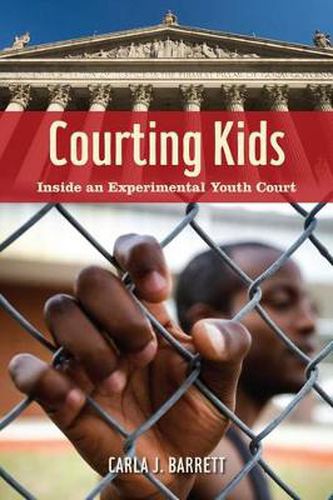Readings Newsletter
Become a Readings Member to make your shopping experience even easier.
Sign in or sign up for free!
You’re not far away from qualifying for FREE standard shipping within Australia
You’ve qualified for FREE standard shipping within Australia
The cart is loading…






Despite being labelled as adults, the approximately 200,000 youth under the age of 18 who are now prosecuted as adults each year in criminal court are still adolescents, and the contradiction of their legal labelling creates numerous problems and challenges. In Courting Kids Carla Barrett takes us behind the scenes of a unique judicial experiment called the Manhattan Youth Part, a specialized criminal court set aside for youth prosecuted as adults in New York City. Focusing on the lives of those coming through and working in the courtroom, Barrett’s ethnography is a study of a microcosm that reflects the costs, challenges, and consequences the tough on crime age has had, especially for male youth of colour. She demonstrates how the court, through creative use of judicial discretion and the cultivation of an innovative courtroom culture, developed a set of strategies for handling adult-juvenile
cases that embraced, rather than denied, defendants’ adolescence.
$9.00 standard shipping within Australia
FREE standard shipping within Australia for orders over $100.00
Express & International shipping calculated at checkout
Despite being labelled as adults, the approximately 200,000 youth under the age of 18 who are now prosecuted as adults each year in criminal court are still adolescents, and the contradiction of their legal labelling creates numerous problems and challenges. In Courting Kids Carla Barrett takes us behind the scenes of a unique judicial experiment called the Manhattan Youth Part, a specialized criminal court set aside for youth prosecuted as adults in New York City. Focusing on the lives of those coming through and working in the courtroom, Barrett’s ethnography is a study of a microcosm that reflects the costs, challenges, and consequences the tough on crime age has had, especially for male youth of colour. She demonstrates how the court, through creative use of judicial discretion and the cultivation of an innovative courtroom culture, developed a set of strategies for handling adult-juvenile
cases that embraced, rather than denied, defendants’ adolescence.